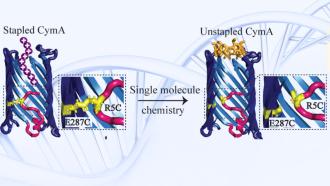
Nowadays, the trending 'health foods' and diet fads have increased the demand for foods that are rich in proteins and fats, and low on carbohydrates. However, how much of these nutrients that we eat is actually digested and absorbed by the body? In a recent study, researchers at the St. John’s Research Institute, Bengaluru, University of Agricultural Sciences, Bengaluru in collaboration with the Scottish Universities Environmental Research Center, UK, have tried to answer this tricky question. They have proposed a new technique, called the ‘dual-tracer method’, to estimate the degree of protein digestibility and amino acid absorption in our body.
Amino acids are the building blocks of proteins. Apart from making up proteins in our body, some amino acids, like glutamine, help convey signals in the brain, and others like arginine, cysteine, and histidine, play roles in maintaining the health of our heart and aid in metabolism and other functions. Out of the 20 essential amino acids required by our body, 11 can be synthesised de novo, or from scratch, while the rest, like histidine, methionine, and tryptophan, must be obtained through an external source and are called indispensable amino acids.
Although much of the food we eat may have significant proportions of indispensable amino acids, their absorption in the body depends on how well our body digests protein. Since some types of protein are not easily digestible, our bodies might not be absorbing as much protein as we think! In the current study, published in the American Journal of Clinical Nutrition, the researchers propose a method to find out how well a protein has been digested once it’s in the body. The study was funded by the Wellcome Trust/DBT India Alliance through a Margadarshi fellowship to Dr. Anura V. Kurpad, of St. John’s Research Institute and principal investigator of the study.
Previous methods to measure protein digestibility involved invasive procedures or could measure only one amino acid at a time by amino acid oxidation based techniques. The ‘dual-tracer method’, which the study proposes, involves intrinsic labelling of test proteins in different protein sources with stable isotopes, or variants of elements with a differing number of neutrons, of elements which are naturally found in amino acids in the body. In this study, the researchers used isotopes of Hydrogen (2H) and Carbon (13C) to detect the abundance of indispensable amino acids in the blood after eating a test meal. With this technique, just drawing a few millilitres of blood can give information about the digestibility of multiple amino acids in the test protein.
The researchers first established digestibility of a standard protein source, spirulina, a uniformly labelled and easily digestible protein source, labelled with carbon isotope (13C). Using this, they measured the digestibility of isotope-labelled chickpeas and mung bean. Both types of legumes were labelled with 2H by watering the plants with heavy water (2H2O). Each type of legume was prepared as a test meal, and along with spirulina, was fed to human volunteers. The blood samples of the participants were then analyzed for the abundance of amino acids using liquid chromatography-mass spectrometry, a technique that separates amino acids based on mass. The post prandial ratio of the appearance of differently labelled amino acids in the blood indicated the true digestion and absorption of the test protein.
This study found that within one protein source, either chickpeas or mung bean, the uptake of different amino acids varied in the test subjects. When the two protein sources were compared with each other, the researchers again found some differences in the uptake of amino acids. However, what was clear was that the technique that they developed could be used for all protein sources and to measure the digestibility of various amino acids at a time.
“The novelty of the dual-tracer method lies in both—the measurement of uptake of multiple amino acids and the intrinsic labelling of the test proteins,” says Dr. Sarita Devi from St. John’s Research Institute, and also the lead author of the study. Although both methods have been used before separately, this group has combined these two processes to create a powerful tool to determine protein quality. Additionally, the establishment of digestibility of (13C)-labelled spirulina as a reference is also useful for further experimental characterization of various common protein sources, such as in eggs, meat and milk.
This study is especially relevant to determine protein demand in populations where the availability of adequate protein sources is lacking. “This minimally invasive method is critical in redefining protein quality and would help to revisit human protein requirements in different settings as well as in vulnerable populations,” says Dr. Kurpad.
The technique is a step towards developing a practical, uncomplicated, and convenient method for testing protein quality, hopefully turning us towards a future where we can design a more effective diet for the sustenance of the entire population.






